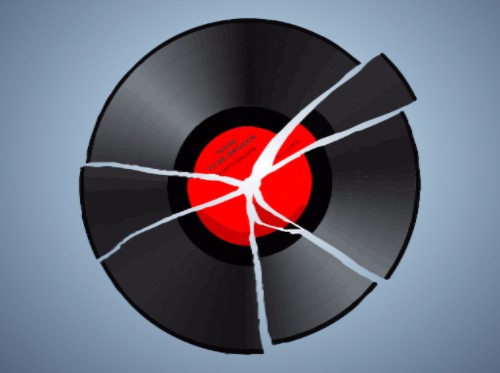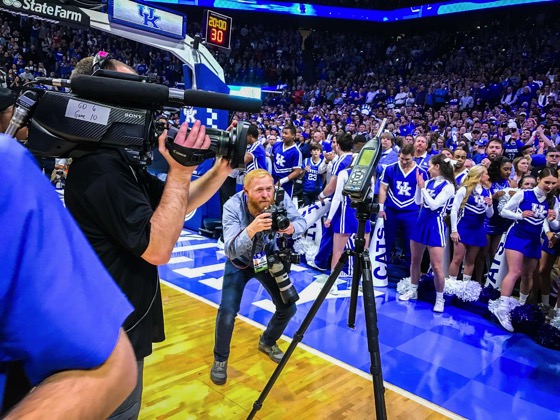

- © 2003 - 2025 Dynamix Productions, Inc. Contact Us 0



"Every crowd has a silver lining.”
P.T. Barnum
126.4 I think that's what will be inside a little oval sticker that I'm going to put on my bumper. I see "26.2" bumper stickers that marathon runners proudly display. Colorado mountain climbers have "14er" stickers. A lot of dads are number "1." Then what's so special about 126.4? It used to be a number for Kings, but now it's a number for Cats.
Before I start to sound like a broken record, let me back up and tell this story from the beginning. Team Cornett wanted to raise the profile of UK Health Care and their close association with UK Athletics, so they came up with a plan to get the attention of a sports crowd. There's no better place for a hyped up crowd than Rupp Arena in downtown Lexington. With nearly 24,000 people, its been known to get really loud in there. It would be the perfect place to try and break the world record for the loudest crowd roar at an indoor sports event. And what basketball game would have the biggest and loudest crowd? A made-for-ESPN-TV marquee matchup: Kentucky versus Kansas.
Preparations began for the January 28 attempt. The existing Guiness World Record of 126 dBA was set by the home crowd in Sleep Train Arena as the Sacramento Kings played the Detroit Pistons in 2013. As an added bonus, one of the team members was actually at that event and took part in the record. Guiness laid out all the rules, restrictions, and suggestions on how to proceed. Twenty-four-thousand ear plugs were ordered, press releases were issued, and the official team was assembled. I was selected as the official audio engineer for this Guiness World Record attempt.
Being chosen was both humbling and exciting. We always had fresh annual copies of the GWR books in our house growing up. Each year we would wonder if the record for tallest man would be broken, who was the oldest ever human, or what new silly records were in the book. I never imagined that I would ever be directly involved in a world record.
Let's talk about the rules. We had three attempts to break the record. There were certain parameters to follow, or else the attempt would be disqualified. The first and most important, was that there could be no electronic amplification or assist during the attempt. Only human voices, applause, and non-electronic noise-makers, megaphones, and musical instruments were allowed. We had to coordinate with the house sound at Rupp to make sure that when we gave the signal, the PA system was muted.
The second rule dictated the minimum distance from the measuring device to the closest sound. We had to be a little more than eight feet away, but we set the device back a little more for safety. We set up near the foul line on one end of the court, just in front of the eRUPPtion Zone filled with rowdy students and the pep band. The measuring device was put on a shock-free tripod and raised to five feet off the ground.
The third rule stipulated we use a certified and calibrated sound metering device operated by an approved audio engineer. We rented a meter similar to the one used in Sacramento that could record all parameters of the sound, including peaks, average level, and time-of-day. The critical measurement was peak, and not sustained level. Since sound can be measured in several different ways, Guiness specified the dBA-SPL scale.
The dBA part of the scale includes decibels (dB), a numeric difference measurement; and A-Weighting, which takes the ear's deficiencies into account. It measures how sound is perceived by the human ear. Like a bell curve, we hear bass and treble frequencies less than we hear mid-range ones. A telephone is a good example of mid-range sound that sits squarely in the center of our hearing.
The SPL stands for Sound Pressure Level. This is the force at which sound waves, or air molecules, are hitting the microphone. The numbers on this dB scale can be baffling because it's a logarithmic ratio that varies as the numbers increase. Two measurements 3 dB apart represent either twice of half the power, whereas measurements 10 dB apart represent 10 times more or less power. Confused yet? Here are some typical measurements:

Jessica Davis Vincent (Cornett), me, Philip Robertson (Guiness), and Jason Majewski (Cornett)
The SPL meter being worshipped by photographers.
This is the only official world record I "hold."